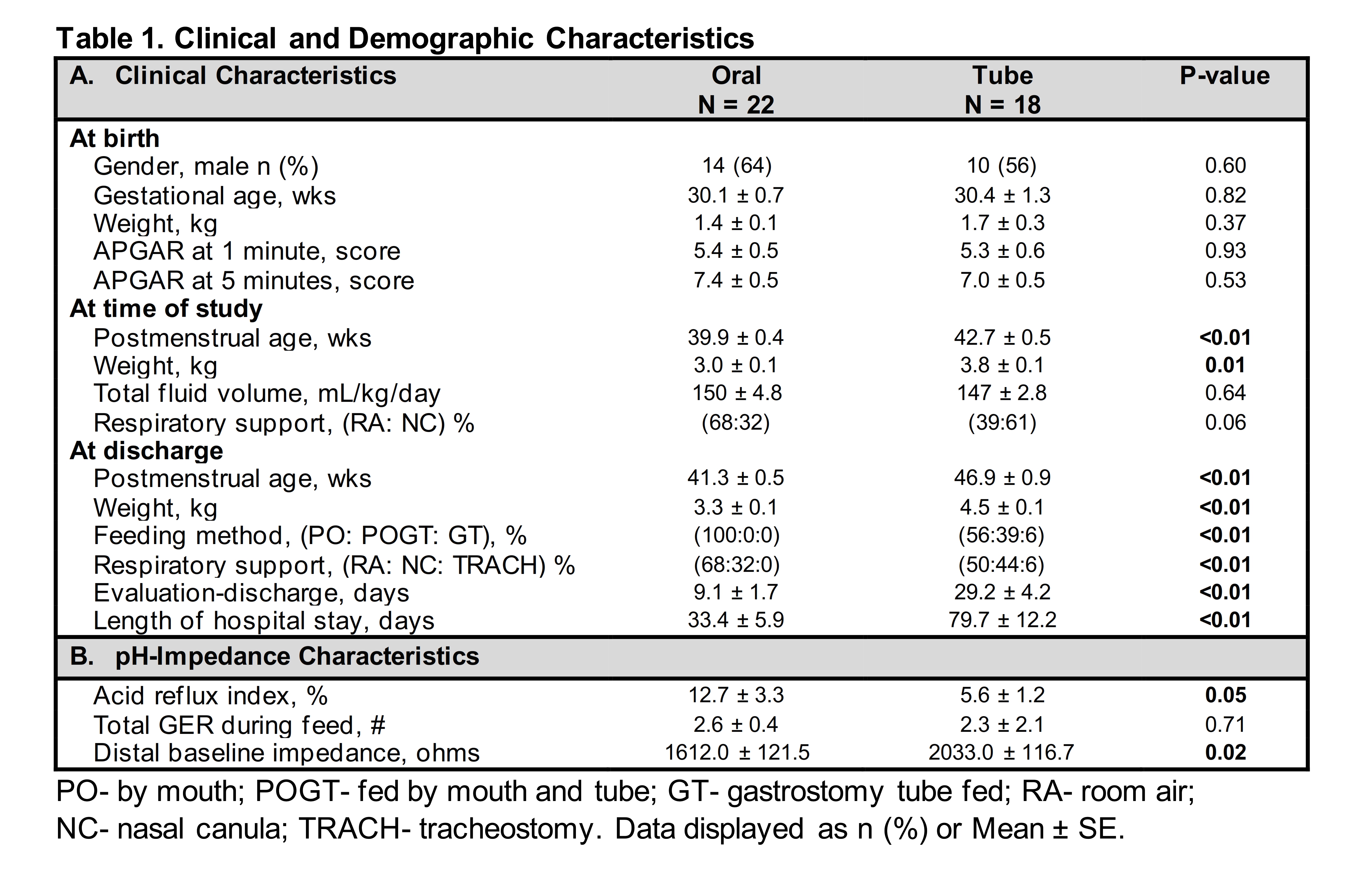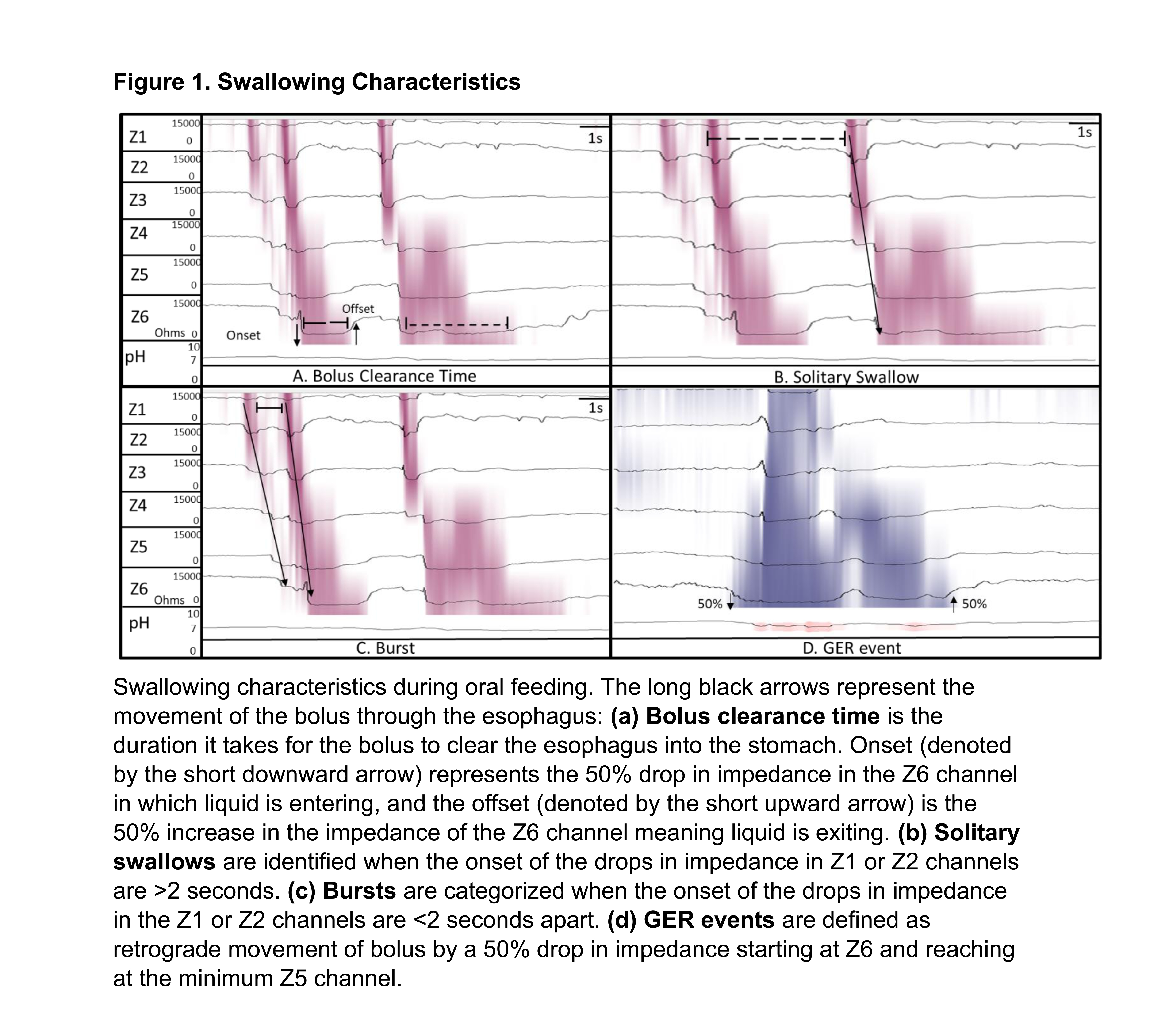Neonatology
Session: Neonatal General 4: Nutrition, Feeding, and Growth
103 - Characterizing Swallowing Patterns in Oral vs Tube fed Infants during pH-Impedance Testing
Friday, May 3, 2024
5:15 PM - 7:15 PM ET
Poster Number: 103
Publication Number: 103.590
Publication Number: 103.590

Alexis Alexander, B.S (she/her/hers)
Research Assistant
Nationwide Children's Hospital
columbus, Ohio, United States
Presenting Author(s)
Background: Feeding difficulties and troublesome symptoms are common among the NICU infants, and may result in malnutrition, failure to thrive, prolonged hospital stays, financial/parental stress, besides other systemic consequences. In such situations, tube feeding is a reasonable alternative. However, prolonged tube feeding deprives the development of swallowing and aerodigestive protection mechanisms and may contribute to the persistence of feeding difficulties and troublesome symptoms. Often, gastroesophageal reflux disease (GERD) is considered among tube-fed infants because of indwelling tube. Infants undergoing evaluation for GERD using pH-Impedance testing, markers of swallowing during the feeding session have not been systematically investigated. Furthermore, differences in oral- or tube-fed infants with relevance to these markers are not known.
Objective: Our aim was to characterize the markers of swallowing and rhythms during an oral feeding session among infants undergoing pH impedance testing for GERD evaluation. We hypothesized that exclusively orally fed infants will have superior swallowing and bolus transit markers compared to part-tube fed infants.
Design/Methods: Oral feeding challenge sessions were conducted by trained nurses during the pH-Impedance testing, wherein symptoms and vital signs were recorded continuously. Data were analyzed for the following metrics: swallowing frequency per minute (bursts/solitary swallows), solitary swallow rate, number of swallow-bursts, air swallows, liquid swallows, bolus clearance time (BCT), number GER events and symptoms, and oral feeding duration. Linear mixed models were used to characterize the oral feeding regulatory characteristics, and statistical comparisons were performed between exclusively oral-fed and part-tube-fed infants.
Results: Oral feeding challenge sessions during pH-impedance averaged 19.3 ± 5.4 minutes. Data from 22 fully oral-fed and 18 tube fed infants were compared (Tables 1- and 2).
Conclusion(s): The characteristics of oral-feeding are distinct between exclusively oral vs. part-tube fed infants. Characteristics of GERD are lesser in tube fed infants despite the indwelling nasogastric tube. Despite greater ARI and presence of comorbidities, oral-fed infants achieved superior outcomes such as greater oral intake coupled with increased swallowing biomarkers.



